EDIT: Heinrich's post is a great visual example of "before and after". He posted while I was writing my version of War and Peace!
Reading everyone's response and advice, I agree with most of it. Painting the edges of the bulkheads is something I do as well.
Two other things I've found are critical; 1) use a sanding block that does NOT bend, it must be ridged, 2) it should span 3 bulkheads, this prevents large angle variations and also prevents one bulkhead from being over sanded.
The objective is to create a smooth hull surface, with "gradual" changes from stem to stern AND lower wale to keel. This job can be made harder or easier, depending on the number of bulkheads on the model. Given two models of the same hull length, if one has 15 bulkheads and the other has 10, the model with 15 will be much easier to work with. That is because the gaps to bridge between the bulkheads are shorter/smaller. Many modelers, including myself use wood blocks that we insert into those gaps between bulkheads to create a pseudo solid hull. The blocks are cut to a rough shape and then sanded along with the bulkheads. For me personally it helps me "see" visualize the curve of the hull.
I never sweat making mistakes. I make them all the time. But we are working with wood. High spots are sanded, shims are placed to close low spots. If we really do learn from our mistakes I have to be smart! Just a couple of photos I hope help.
Rough shaped blocks between bulkheads, the bulkheads marked with "sharpie blue" and then rough sanding.
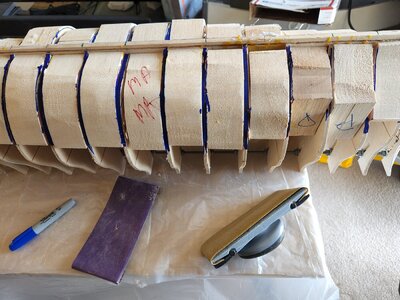
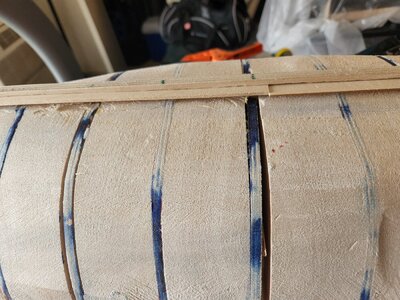
Running a batten to check bulkhead edges. Ideally, the batten should span the entire length of the ship's hull. I was waiting for wood of that length but could not wait to see if I had any real bad issues. I later checked with a full length batten.
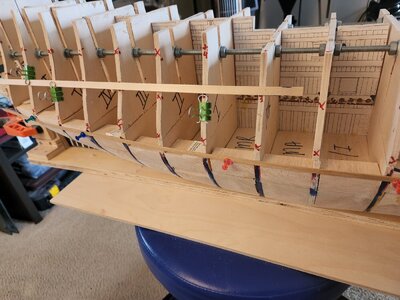
For me, this phase of modeling work is not exciting at all. But it may be the most important. Done right, you'll see the beautiful lines the shipwright saw. Not done correctly, and the mistakes will be evident as high or low spots or a "wavy" appearance when you look down the length of the ship. But.....never fear!! If you are working on a kit, there is a good chance you will have two (2) layers of planking, a foundational layer and a thin veneer finish layer. Any mistakes will be evident after the first layer, and you're working with wood. High spots can be sanding and low spots can be filled with wood filler.
I see hull fairing more of an art than science. The more you do it the better you become at it. And maybe the final thing is, don't rush. Take your time. If you get frustrated, like I do sometimes, go take the dog out for a long walk and come back with fresh eyes and new energy.
Try and visualize what it will look like finish, or at least when the basic hull is finished. As ugly as the photos above are, I'm fairly happy with the lines of the finished hull once done. Not completely absent of mistakes but a result I can live with.
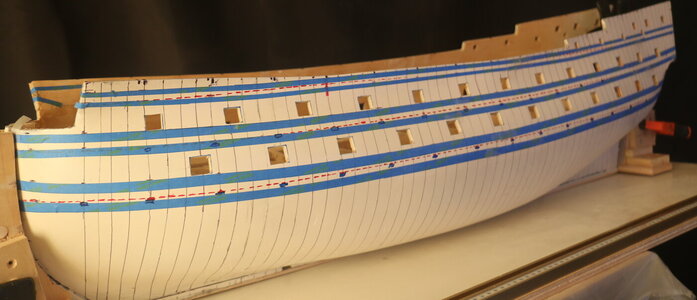



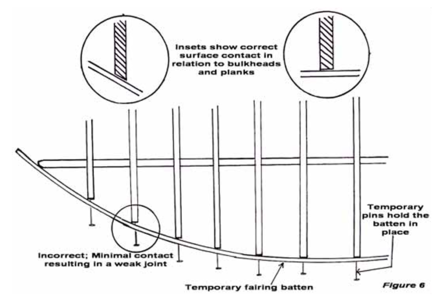







 That's me!! (but not anymore!
That's me!! (but not anymore!  )
)